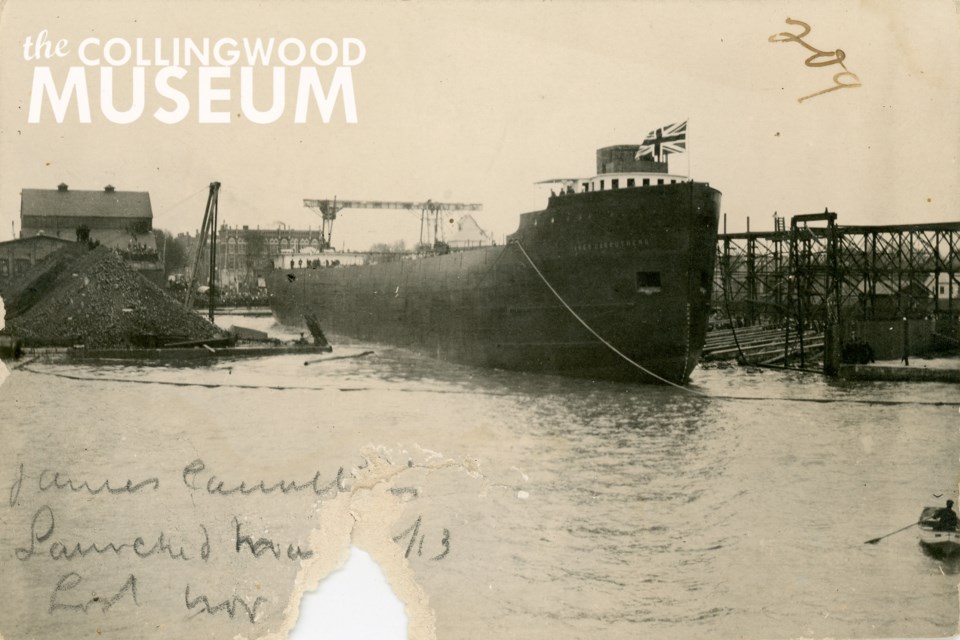On May 22, 1913, the largest bulk freighter on the Great Lakes – named the James Carruthers – slid down the launch ways and into the flooded waters of Dry Dock No. 2 at the Collingwood Shipyards.
Six short months later, she would join the long list of casualties of the Great Storm of 1913.
In today’s featured photograph a group of onlookers can be seen perched on the rooftop of the Boiler Shop, just behind the large coal pile on the left side of the photo. The vertical, crane-like structure to the right of the coal pile was used to lower boilers into ships, being the predecessor of the shear legs that would eventually be erected along today’s Heritage Drive.
On the day of the Carruthers’ launching, spirits were high and no one could have predicted its tragic end. To date, the final resting place of the Carruthers has yet to be found, but she is believed to have disappeared in Lake Huron on November 9 off Harbor Beach, Michigan. She was loaded with a shipment of grain from Fort William.
The Carruthers’ immense size is quite striking, particularly when considering the capacity of Collingwood’s grain elevator in 1913. Predating today’s Collingwood Terminals structure, the much smaller wooden grain elevator boasted a capacity of 160,000 bushels. The Carruthers’ hold could accommodate 250 per cent more than this amount at 375,000 bushels. That’s almost 20 per cent of the concrete Collingwood Terminals’ bushel capacity.
The James Carruthers was owned by the St. Lawrence and Chicago Navigation Company. Upon losing the vessel, the Company contracted the Collingwood Shipyards to build Hull 42: J.H.G. Hagarty. The Hagarty was launched on June 18, 1914. You can read more about the Hagarty here.
At the time of the Great Storm, the Carruthers had completed two official runs. The time between its launch and the start of its official duties was spent fitting out and doing sea trials.
Author Skip Gillham posits in his book The Ships of Collingwood that the Carruthers would have lasted into the 1960s had she not been a casualty of the greatest storm to hit the Great Lakes.
If you have any information to share about today’s featured photograph or the James Carruthers, please contact Collingwood Museum staff at [email protected].
Remember This is a weekly series of historic photographs submitted by the Collingwood Museum to CollingwoodToday.ca. These photographs were originally collected and documented by the Huron Institute in an historical catalogue entitled Huron Institute Paper and Records: Volume III. Much of Collingwood’s early history has been preserved due to the dedication and foresight of the early museum’s founders, namely its secretary-curator David Williams, upon its establishment in 1904.
